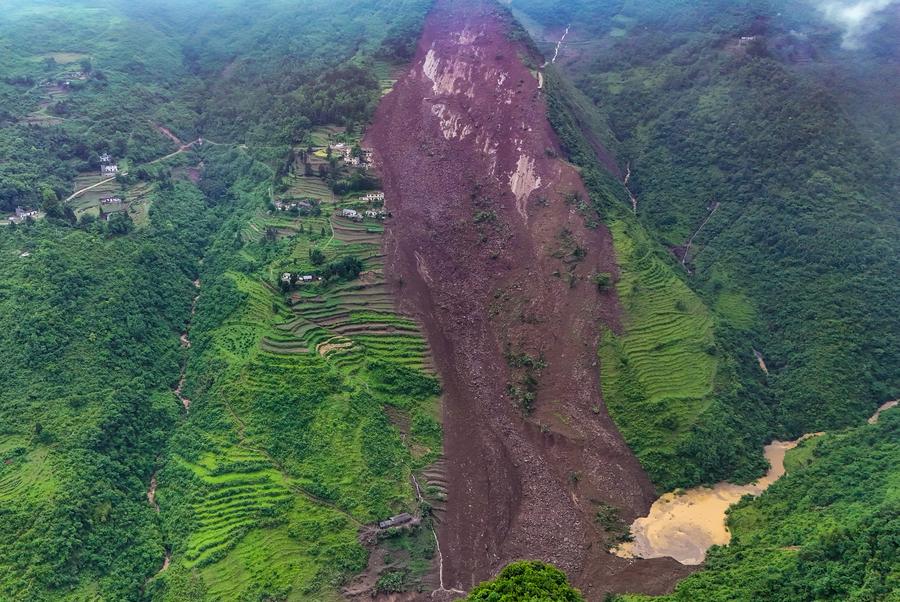A c1.4 million cubic metre landslide, triggered by intense rainfall, killed 19 people.
On 22 May 2025, the large Qingyang landslide occurred in Dafang County, Guizhou Province, China. This landslide was widely reported to have “trapped” 19 people.
In a paper in the journal Landslides, Wen et al. (2025) provide an initial but very helpful description of this failure. It confirms that 19 people were indeed killed in the event.
In the aftermath of the landslide, Xinhua published this image of the failure:-

The crown of the landslide is at [27.52004, 105.83551]. There is some drone footage of the landslide on Youtube:-
Wen et al. (2025) have calculated that the landslide had a total volume (including material entrained from the lower part of the slope) of 1.388 million m3. Based upon imagery on Planet, it had a total runout distance from rear scarp to toe of 1.35 km.
The authors note two key causal factors for this landslide. First, the Qingyang landslide is a bedding-plane failure, occurring on the interface between a sandstone layer that overlaid a limestone layer (this is visible in the upper part of the images above). The geological units were orientated parallel to the slope, a condition that frequently promotes instability. Second, the toe of the slope had been eroded by the river, undermining the stability of the mass.
The final failure was triggered by heavy rainfall. Wen et al. (2025) report that nearby rain gauges recorded over 200 mm of rainfall between 19:00 on 21 May and 06:00 on 22 May. A rain gauge located 1.4 km from the Qingyang landslide recorded 98.9 mm of rainfall in a three hour period.
Warnings were in place for this rainfall, but of course a slope failure of this type had not been anticipated. Other, smaller, failures also occurred in the local area.
China is able to respond rapidly to these types of events – probably more so than in most other places – but of course the likelihood of survival for those caught in such a landslide is low.
The challenge remains as to how such failures can be anticipated given the complexity of the topography and the geological conditions. The combination of an adverse geological structure and toe erosion is probably replicated widely across this area, but the vast majority of such slopes did not fail in this rainfall event.
Reference
Wen, H., Zhou, X., Xia, Z. et al. 2025. Preliminary reports of a catastrophic bedding-plane landslide in Qingyang Village, Dafang County, Guizhou Province, China, on May 22, 2025. Landslides https://doi.org/10.1007/s10346-025-02641-5


